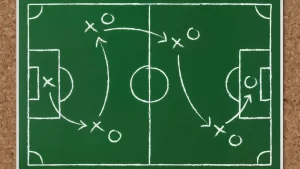Filing Form I-539 Secrets: Extend Your Stay Without Stress

Form I-539: What You Must Know to Extend or Change Your Nonimmigrant Status
Form I-539 is your key to either extending your stay or changing your visa status if you are in the U.S. on a nonimmigrant visa. Many visa types, including visitors, students, and dependents of work visa holders, require this form, filed with the U.S. Citizenship and Immigration Services (USCIS).
Although filing Form I-539 may seem difficult, knowing its requirements and the related supporting documentation will help to streamline the process. Everything you need to know about the I-539 immigration form—including fees, processing times, and what happens upon approval—will be covered in this guide.
What Is Form I-539?
Those who want to stay longer in the United States or change their present visa status to another nonimmigrant category utilize Form I-539. This form is your lifeline to keep your U.S. visit legally ongoing whether you’re a tourist on a B-2 visa wishing to prolong your stay or an F-1 student looking to switch to an H-4 dependant visa.
Filing Instructions for Form I-539
Make sure you finish the required actions before you submit. You should do as follows:
- Fill out the application: Apply by completing the Form I-539. Either online or offline.
- Supporting documents: Compile all the supporting documentation for I-539, including your I-539 travel document number, proof of current visa status, and a copy of your passport.
- Submit your form: Based on your visa type, make sure you submit the required documentation to the proper I-539 filing address. If easier, you can also choose Form I-539 online filing.
- Pay the fees: The Form I-539 fee is $370 plus, if relevant, an extra biometric fee of $85. Make sure you put in the correct amount to prevent delays.
- Track your case: The USCIS website shows the status of your application.
Fee for Form I-539

As mentioned earlier, the fee for Form I-539 is $370; but, this might change based on other considerations, such as biometric requirements. To prevent any problems, you must validate the precise amount on the official USCIS website. “How much is the I-539 form filing fee?” or “What is the filing fee for I-539?” many candidates ask. The simple answer comes with a basic filing fee of $370.
Some applicants need to pay the extra biometric charge of $85, hence make sure you find out whether you should do so. Ignorance of missing or insufficient payments could cause your application to be denied.
What Is the Processing Time for Form I-539?
Processing time for Form I-539 relies on the service center managing your application. USCIS normally takes two to five months to process a form. The volume of applications and whether you submitted an in-depth and accurate application will affect the I-539 processing time.
Sadly, there is no I-539 premium processing now accessible for customers looking for speedier processing. Though this is rare, USCIS may speed up your application in an emergency.
What Happens After I-539 Is Approved?
Depending on your visa status, you can legally stay in the United States for the specified or modified length once your Form I-539 is granted. “My I-539 approved, what next?” may be on your mind. you should get confirmation of your modified or extended visa status.
Still, you have to follow the updated requirements of your visa. Ignoring this could compromise your next application for immigration.
What Happens If My I-539 Is Denied?

Although it can be upsetting to get denied, consider your alternatives if your Form I-539 is denied. The first query in this situation is, “My I-539 was denied, what next?” You must likely leave the country immediately to avoid breaking any immigration laws. Alternatively, although this might be a drawn-out procedure, you could investigate other choices including appealing.
If your I-539 is denied, seeking advice from an experienced immigration attorney will enable you to negotiate the next actions and avoid more legal issues.
Premium Processing and Special Considerations
Though premium processing for I-539 is not now offered, it’s advisable to monitor potential USCIS modifications. Applicants ought to plan for the typical Form I-539 processing time and properly prepare their applications far in advance of any visa expiration date.
Those seeking extensions or status adjustments should be aware of the I-539 pending grace period. Usually, you have to file for a change of status or an extension before your current visa expires. Ignoring deadlines could lead to illegal status, therefore compromising your chances to remain in the United States.
Supporting Documents for Form I-539
Making sure your application is handled without delays depends on you submitting all required I-539 forms supporting documentation. Typical files consist of:
- Travel documentation number
- Demonstrating visa status
- Copies of the passports
- Additional documentation based on your type of visa
If necessary, submit a written statement sample outlining your explanations for seeking an extension or status adjustment.
Filing Address and Online Submission for Form I-539
Make sure your file Form I-539 matches the service center. Your visa type and where you live now will determine the Form I-539 where to file instructions. Before submitting your form to avoid any needless delays, confirm your particular I-539 filing address on the USCIS website.
Alternatively, Form I-539 online filing will save time and more easily track your application status.
How to Avoid Common Pitfalls in Filing Form I-539

Although the Form I-539 filing process seems simple, many applicants experience delays or rejections from typical mistakes. Here’s how to avoid them:
- Incomplete Information: Make sure every part of the form is completed totally. One of the most often occurring causes of denial is incomplete forms. Particularly pay close attention to important information including your Form I-539 travel document number and visa information.
- Incorrect Filing Address: The USCIS has strict regulations regarding where to send your application. The official USCIS website provides the correct Form I-539 filing address. Filing to the incorrect address could seriously slow down your processing.
- Expired Visa Grace Period: Filing late or beyond the I-539 pending grace period can result in the automatic rejection of expired visas. Apply ideally before your visa expires.
- Supporting Documentation: It is important to submit the necessary I-539 supporting documentation. Missing or insufficient documentation might cause requests for more proof, lengthen the processing period, or even cause a refusal.
- I-539 for Family Members: If you are filling in for family members, be sure to accurately list each dependent and provide the required paperwork for every person. Missing information for even one family member can cause the application to be delayed overall.
These actions will help you to reduce mistakes and raise your chances of a perfect and successful application.
Get Professional Assistance for Filing Form I-539
Maintaining legal status in the United States depends on your correctly filing Form I-539. Any oversights or mistakes could cause costly delays or denials that compromise your stay. Professional legal advice might make a big difference if you find the process unclear or require individualized guidance.
Passage Law: Expert Advice Will Help You to Stay Safe

Especially when handling time-sensitive documents like Form I-539, understanding the complicated world of U.S. immigration law can be concerning. Visit Passage Immigration Law to avoid needless delays and expensive errors. Our experienced immigration lawyers can help guarantee your application is correct, thorough, and timely filed.
Don’t risk your immigration status; contact us now for a consultation and let us handle the complexity of your Form I-539 submission. Expert legal advice lets you concentrate on your future in the United States free from immigration concerns.
